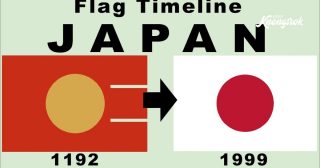Japan is a country rich in culture, history, and natural beauty.
Here are ten notable places in Japan, along with articles highlighting their significance:
1. Tokyo
Tokyo, the capital of Japan, is a vibrant metropolis that seamlessly blends tradition with modernity. From the bustling streets of Shibuya and the high-tech districts of Akihabara to the serene temples of Asakusa and the lush gardens of the Imperial Palace, Tokyo offers something for everyone. Visitors can enjoy world-class shopping, dining, and entertainment, while also experiencing traditional Japanese culture through sumo wrestling, kabuki theater, and tea ceremonies.
2. Kyoto
Kyoto, once the capital of Japan, is known for its well-preserved temples, shrines, and gardens. The city is a treasure trove of historical sites, including the iconic Fushimi Inari Shrine with its thousands of red torii gates, the golden Kinkaku-ji (Golden Pavilion), and the tranquil rock gardens of Ryoan-ji. Kyoto is also famous for its traditional wooden townhouses (machiya), tea houses, and the seasonal beauty of cherry blossoms in spring and vibrant foliage in autumn.
3. Osaka
Osaka, Japan’s third-largest city, is known for its modern architecture, nightlife, and hearty street food. The city is famous for its food culture, especially dishes like takoyaki (octopus balls) and okonomiyaki (savory pancakes). Osaka Castle, with its striking white exterior and expansive gardens, offers a glimpse into Japan’s feudal past. The bustling Dotonbori district, with its neon lights and energetic atmosphere, is a must-visit for those looking to experience the city’s vibrant spirit.
4. Hokkaido
Hokkaido, the northernmost island of Japan, is known for its natural beauty, including hot springs, volcanoes, and ski resorts. The island’s capital, Sapporo, is famous for its annual snow festival featuring large ice sculptures. Hokkaido’s national parks, such as Daisetsuzan and Shiretoko, offer opportunities for hiking, wildlife spotting, and enjoying the region’s pristine landscapes. In winter, Niseko and Furano are popular destinations for skiing and snowboarding enthusiasts.
5. Nara
Nara, located near Kyoto, is an ancient city known for its historical treasures, including some of Japan’s oldest and largest temples. The Todai-ji Temple, home to the Great Buddha (Daibutsu), is one of the most significant Buddhist temples in Japan. Nara Park, where the temple is located, is famous for its free-roaming deer, which are considered sacred and are a symbol of the city. Nara’s rich cultural heritage and serene atmosphere make it a popular destination for those interested in Japan’s history.
6. Hiroshima
Hiroshima is a city with a poignant history, known globally for being the first city targeted by an atomic bomb during World War II. Today, the city is a symbol of peace and resilience. The Hiroshima Peace Memorial Park and the Atomic Bomb Dome serve as reminders of the city’s tragic past and a call for nuclear disarmament. Despite its history, Hiroshima has rebuilt itself into a vibrant, modern city. The nearby island of Miyajima, with its famous floating torii gate, offers a serene escape and is considered one of Japan’s most scenic spots.
7. Fukuoka
Fukuoka, located on the island of Kyushu, is known for its ancient temples, beaches, and modern shopping malls. It is a city that beautifully blends contemporary and traditional elements. Fukuoka Castle ruins and the Dazaifu Tenmangu Shrine attract visitors interested in history, while Canal City, a large shopping and entertainment complex, is popular among those looking for modern attractions. The city is also famous for its street food, particularly Hakata ramen, which features a rich pork bone broth.
8. Okinawa
Okinawa, a tropical paradise in the southern part of Japan, is famous for its beautiful beaches, clear blue waters, and unique culture. The island has its own distinct traditions, influenced by both Japanese and Southeast Asian cultures. Okinawa is a popular destination for water sports like snorkeling, diving, and surfing. The Okinawa Churaumi Aquarium, one of the largest aquariums in the world, showcases the diverse marine life of the region. Shuri Castle, a UNESCO World Heritage Site, offers a glimpse into the island’s Ryukyu Kingdom past.
9. Nagano
Nagano, located in the Japanese Alps, is famous for its stunning mountain scenery and outdoor activities. It gained international attention as the host of the 1998 Winter Olympics. The city of Nagano is home to the Zenko-ji Temple, one of Japan’s most important pilgrimage sites. The surrounding region is ideal for hiking, skiing, and enjoying natural hot springs (onsen). The nearby Jigokudani Monkey Park is famous for its wild snow monkeys that bathe in the hot springs during winter.
10. Mount Fuji
Mount Fuji, Japan’s highest peak, is an iconic symbol of the country and a UNESCO World Heritage Site. The nearly perfect conical shape of the volcano is recognizable worldwide, making it a popular subject for art and photography. Climbing Mount Fuji is a popular activity, with thousands of climbers making the ascent each summer. The surrounding Fuji Five Lakes region and Hakone offer numerous opportunities for outdoor activities, hot spring baths, and scenic views of the mountain.
Each of these places offers a unique glimpse into Japan’s rich cultural heritage, natural beauty, and modern innovations, making them must-visit destinations for travelers.










